La Columnea: [Planting, Care, Irrigation and Substrate]
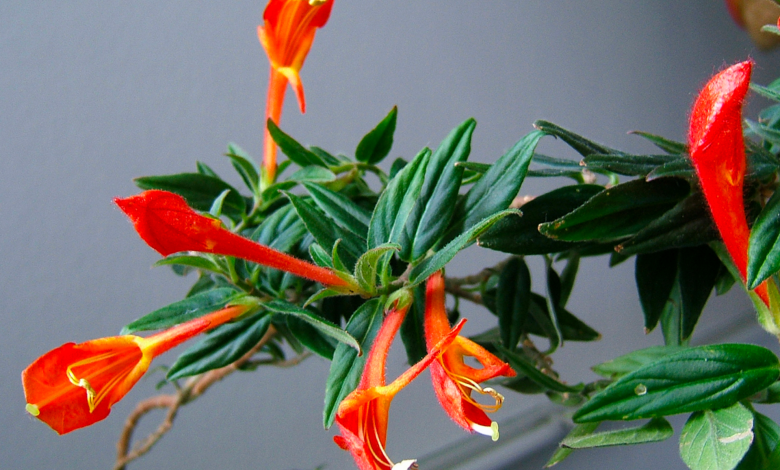
The Columnea, is an indoor plant belonging to the Gesneriaceae family, native to the jungle areas of Central America, but which has also managed to spread throughout the world, with more than 150 species, including hybrids, that adapt very well to various environments.
In addition to the popular Columnea microphylla, the following species stand out: Columnea hirta, Columnea kewensis, Columnea gloriosa, Columnea schiediana and Columnea aurantica.
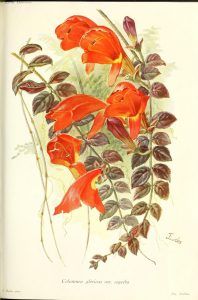 The Columnea Microphylla is the species that best adapts as a hanging plant and indoor hanging plant as long as it grows in suitable pots, or it also assumes the modality of a creeping plant with great coverage in soils, as the Columnea hirsuta does.
The Columnea Microphylla is the species that best adapts as a hanging plant and indoor hanging plant as long as it grows in suitable pots, or it also assumes the modality of a creeping plant with great coverage in soils, as the Columnea hirsuta does.
Its stems are long and bear evergreen, rounded opposite leaves. In the same way, colorful orange, red or purple flowers appear in the axillary area, which have curious tubular shapes.
This visual spectacle has given La Columnea well-earned fame, both in spring and summer, whose massive orange and red flowers hanging from their long stems, recall the movement in the water of «golden carp» fish, with an overflowing effect that seems to make these happy tubular flowers jump out of the pot so strong that they can also give us their happy colors in autumn.
Sometimes, flowering lasts until the arrival of winter. Columneas have very pretty flowers.
Did you know…?A feature to highlight is linked to its malleable, very flexible stems that are born with such a firmness that allows them to grow and then fall, like a waterfall, a true refreshing visual spectacle that you can make the most of.
Temperature: Where to sow the columneas?
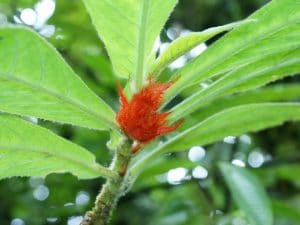 It requires to live in warm environments, between 20 to 22 °C, but in the flowering season the temperature should be between 13 to 16 °C.
It requires to live in warm environments, between 20 to 22 °C, but in the flowering season the temperature should be between 13 to 16 °C.
Frost is its weak point. The Columnea was simply not born to withstand temperatures below zero degrees Celsius. Always try not to expose it beyond 10°C, its lower limit.
Light: What light needs do they have?
The Columnea Microphylla admits to living peacefully in very well-lit interior sites, as long as the incidence of solar rays is indirect and of dry or cold currents.
Place the pot in a shady area of your home and you will see how quickly your Columnea will develop.
Substrate and Fertilizer: How do we prepare the land?
In general terms, this plant is almost always grown in tall or hanging pots in order to get its stems to fully advance, because they always grow to hang several meters down. But this container where your Columnea will live must be previously prepared with a mixture of loamy soil with peat.
In summer and autumn it is opportune to give it a mineral fertilizer that feeds it. Search the market for those that do not contain calcium and apply it every 30 days.
The substrate, don’t forget, is light and acidic.
Repotting should always be done after flowering is complete, when you want to give it more room to grow in a pot.
Sowing columns step by step
- In case you have the columnea in the pot, prepare a hole that is larger in diameter and deeper than the pot itself.
- Fill said hole with compost (as mentioned above). Well-rotted compost is usually a good choice.
- Carefully remove the column from the pot and place it in the hole previously made.
- Put the previously removed soil back into the hole, making sure that the roots of the columnea are completely covered.
- Water with drip or sprinkler for a long time, but avoiding excessively flooding the soil.
Irrigation: Frequency and amount
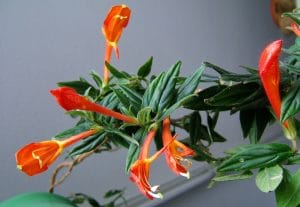 Flooded or waterlogged soils are not recommended for any plant. Columna is no exception.
Flooded or waterlogged soils are not recommended for any plant. Columna is no exception.
The land must be permanently moistened, so that this plant does not lose its ability to absorb water to keep its leaves and stems alive.
If you see the leaves withered or that they begin to turn yellow, it is due to lack of water.
Did you know…When the irrigation is abusive then you will see the flowers fall before time. Use the following technique: water the plant slowly, with a rain-type watering can once a week in summer and every 15 days in winter, the plant’s rest time, until the new flowering stage occurs.
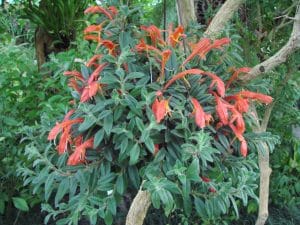 You can also spray its leaves when the ambient humidity drops, or you will notice that they begin to look wrinkled. That is an indication that you urgently need to hydrate. Do not wet, yes, never your flowers because you will damage them a lot.
You can also spray its leaves when the ambient humidity drops, or you will notice that they begin to look wrinkled. That is an indication that you urgently need to hydrate. Do not wet, yes, never your flowers because you will damage them a lot.
The soil will always be oxygenated in this and any other plant if the quality of the irrigation is optimal. The appearance of fungi, fall of its flowers and damage to its leaves are also avoided. Stir the substrate with a pitchfork from time to time and you will achieve these results.
The irrigation water must be warm and free of lime, with a high level of environmental humidity. When the environment is dry, put the entire pot in another larger container, placing wet stones or moistened peat in its tray.
Finally, take great care of it from attacks by bugs such as aphids, although it is usually quite resistant and, therefore, it is one of the best hanging species in the entire world.

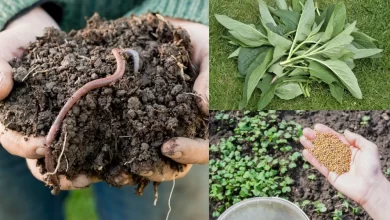
![Photo of Vertical Garden: [Complete Guide, Examples and How to Make Yours]](https://www.complete-gardening.com/wp-content/uploads/2022/08/jumpstory-download20220214-103733_1-scaled-1-390x220.jpg)
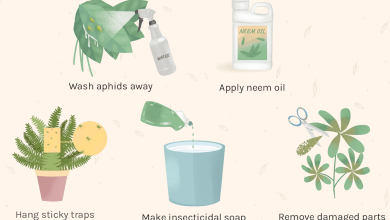
![Photo of La Fitonia: [Characteristics, Planting, Care, Irrigation and Substrate]](https://www.complete-gardening.com/wp-content/uploads/2022/08/la-fitonia-characteristics-planting-care-irrigation-and-substrate-390x220.jpg)